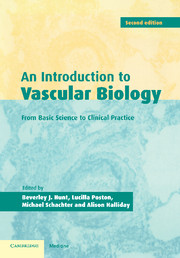9 - The endothelium in health and disease
Published online by Cambridge University Press: 07 September 2009
Summary
Introduction
The endothelium is far from the inert lining to blood vessels that it was originally considered to be, but a highly specialized, metabolically active organ. Resting endothelial cells form a monolayer maintaining a barrier between blood constituents and the extravascular space, but they also exert multifunctional homeostatic effects (Table 9.1). Although only one cell thick, the endothelium constitutes a dynamic interface between the blood and the rest of the body. It is also increasingly recognized that endothelial cells are heterogeneous, in that the function and phenotype of endothelial cells are specialized according to their particular site, e.g. cerebral endothelial cells lack thrombomodulin (see below), and not all endothelial cells constitutively express histocompatibility locus A (HLA) class II molecules. Discussion of the endothelium in disease is a confusing area. In many circles the term ‘endothelial dysfunction’ is a synonym for impaired endothelial dependent vasodilatation. The aim of this chapter is to emphasize that the pathophysiological responses of the endothelium involve multiple effects and play a critical role in many diseases (Table 9.2).
Endothelial cell activation
The quiescent endothelium maintains a status quo, but under the stimulation of certain agents such as interleukin-1 (IL-1) and tumour necrosis factor-α (TNF-α) it undergoes a series of metabolic changes and participates in the inflammatory process; this is known as endothelial cell activation (ECA) and is a central pathophysiological event.
- Type
- Chapter
- Information
- An Introduction to Vascular BiologyFrom Basic Science to Clinical Practice, pp. 186 - 215Publisher: Cambridge University PressPrint publication year: 2002
- 2
- Cited by



